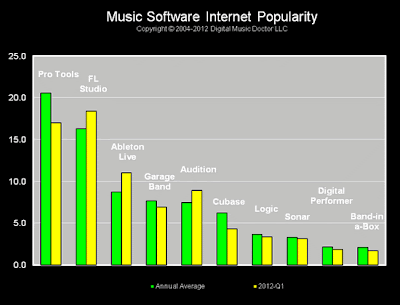Musicians have to make a living, and when enough income to stay alive isn't coming from music, then you have to resort to other things. Some get a straight job, which can easily ensnare your time and focus, while others insist that playing music, anyway anyhow, is the only way to go.
Here's a great set of tips on busking (another word for street performing) taken from the
Discmakers blog. You can r
ead the entire article here, but the tips and tricks are found below.
"1. Watch other street performers
Observing strategies used by experienced street performers can help you know how to adapt to any performance situation and make your own public show a success. “Do other street performers announce each song or just play straight through? Do they make eye contact with their listeners? Does their repertoire change depending on who’s there and what’s going on?
2. Know what’s legal
When you decide to busk, the last thing you want is to have your spellbinding street performance interrupted by a ticket-wielding police officer. A quick internet search should give you a good idea of what’s legal when it comes to public performances in any given community, and a call to a local police precinct or town hall won’t hurt either. Be sure to ask not only about performing publicly, but about accepting tips or donations, and selling CDs, as well.
3. Pack light
Whether you’re playing in a train station or local park, the less gear you have to lug, the better — especially if you have to relocate on the fly due to rain, law enforcement, or any other number of factors outside of your control.
4. Experiment with times and locations
There’s no magic formula by which to choose the ideal spot and schedule for your busking forays, so observation, trial and error, and word of mouth are good paths to follow. Much of your choice when it comes to venue will depend on the character of your performance, and on your personality as a performer. Safety is also a concern, and Gelman recommends busking in an area that is both well lit and provides you with a solid wall, statue, fountain, pillar or other structure behind you.
5. Choose a diverse repertoire that you connect with
Regardless of whether you’re playing gutbucket blues or bossa nova, make sure that your material of choice excites you. “I probably differ from about 90-percent of buskers in that I perform nearly all of my own music,” says Gelman. “That’s how I sell CDs. I connect most strongly to my own songs and people connect to that and respond to that in turn.”
Above all else, try different selections and see what draws audience attention. “We experimented with Mozart and Beethoven classic quartet music, but that tended to not work as well for earning money as popular classical standards like Pachelbel’s Canon,” says Premawardhana. “If people hear something that they know and love, they’ll generally stop and put bucks in.”
6. Bring paraphernalia
Whether you have post cards, a sign, or a banner, make sure you have something for people to read while they watch you, says Pattillo. “Signs are how I grab people’s attention,” adds Gelman. “And there’s the added bonus that if people take photos and videos of me and they end up on YouTube, then my name is there in the video.”
Beyond signage and postcards, having a CD to sell is important, even if the recording isn’t professional, says Pattillo. “Sometimes people want to take a bit of that experience home with them, so be sure to give them the option to buy something they can hold on to.”
7. Go with the flow
“When you busk, don’t take yourself too seriously,” advises Gelman. “Honor that what you’re doing is unpredictable and subjective to your audience, more than at any other place. If you can tune into that energy, you’re going to have a much easier time.”
Part in parcel with that philosophy is focusing not just on making money, but on connecting to the audience, spreading your name, and generally growing as a musician and a performer. “I always saw busking both as an opportunity to practice and to perform,” says Premawardhana. “Singing or playing an instrument is like flying an airplane. The more flight hours you can put in, the better.”
8. Give, and expect, respect
Since busking isn’t generally as regulated as a club gig, it’s important to be aware of your fellow street performers. That means showing up early to claim prime busking locations, being friendly and respectful towards others busking musicians, and standing up for yourself when you need to."
Street performing is a great way to not only make a little money, but really hone your performing chops. Some buskers have even gone on to greatness (that's how
Justin Beiber started), so take it just as seriously as any other gig.
Read the entire article, as well as some others on busking, here.
----------------------------------





